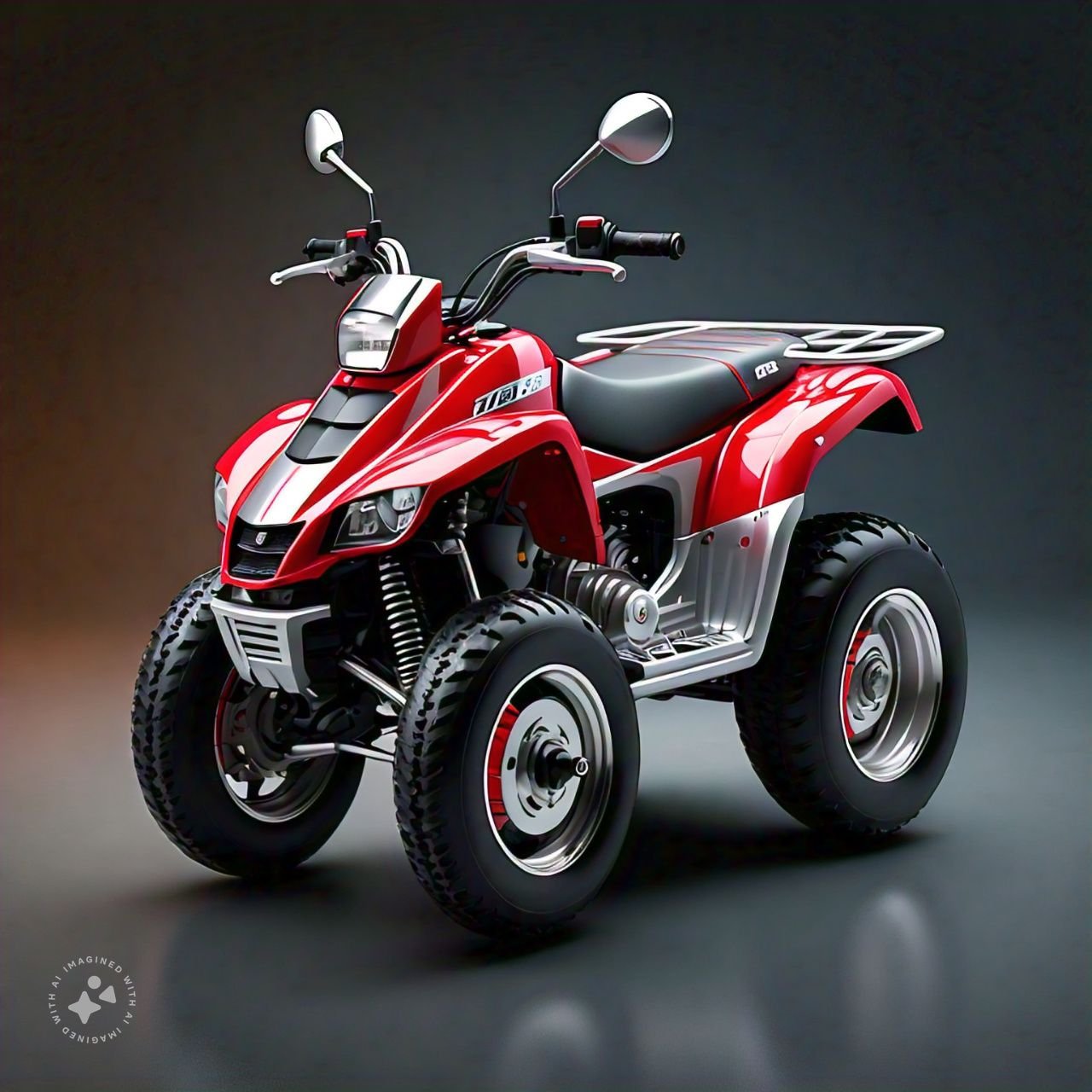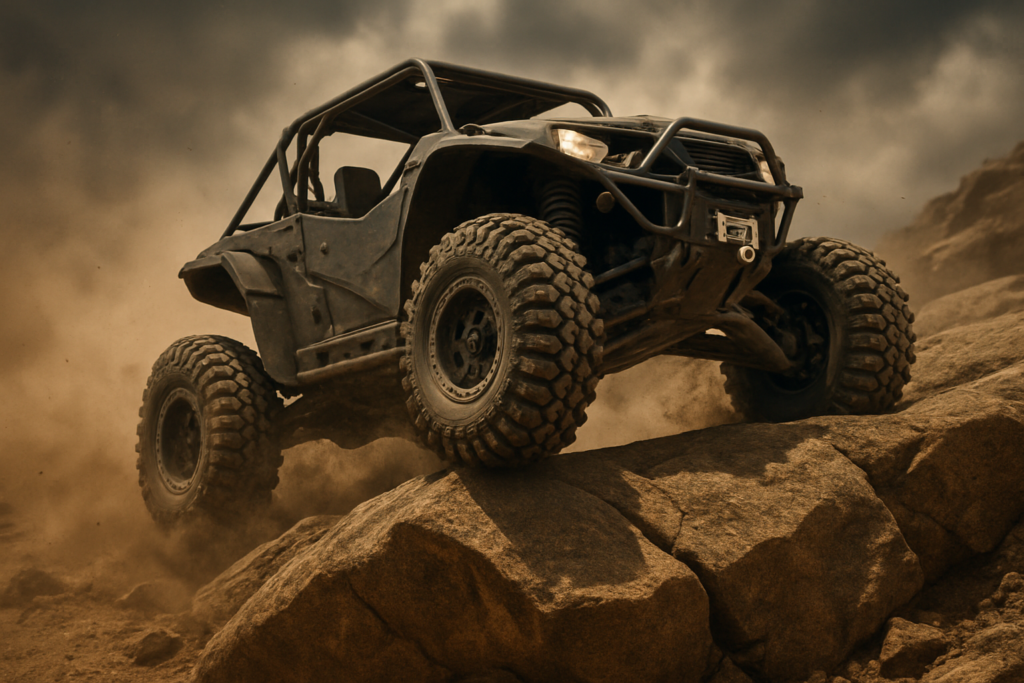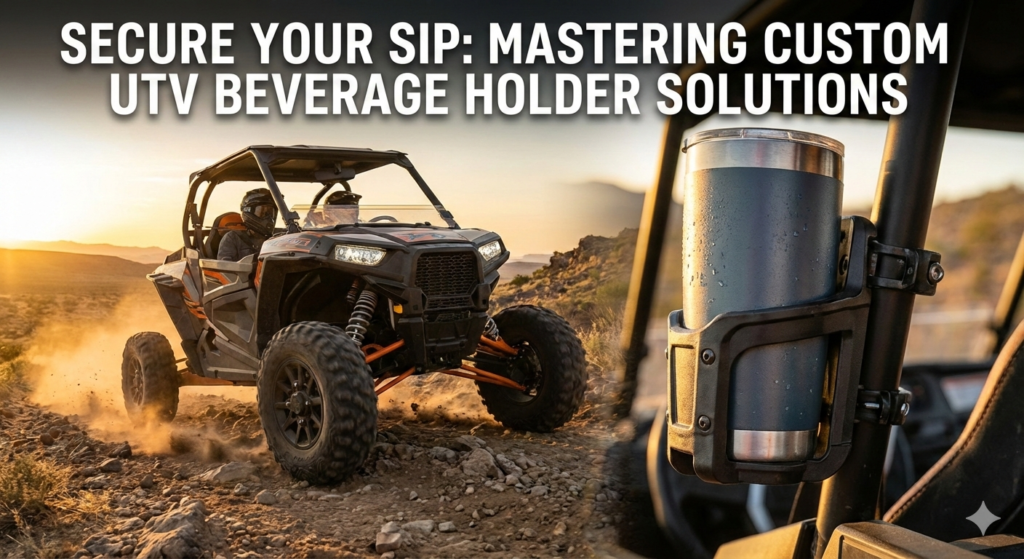The Pioneer Honda has long held a distinguished place in the annals of off-road vehicle history. modern ATVs and LTVs 🏇
As one of the early trailblazers in the domain, Honda’s introduction of the Pioneer series set a new standard for reliability and innovation.
Launched initially to cater to the growing demand for versatile and robust off-road vehicles.
The Pioneer Honda quickly became synonymous with durability and performance.
Its contributions laid the groundwork for the development of more advanced off-road technologies and vehicles.
In contrast, modern ATVs (All-Terrain Vehicles) and LTVs (Light Tactical Vehicles) have undergone significant evolution.
ATVs, known for their ability to navigate rugged terrains with ease, have become indispensable in various sectors ranging from recreational use to agricultural and industrial applications.
LTVs, on the other hand, are designed to meet the rigorous demands of military and tactical operations, offering enhanced mobility, protection, and versatility.
These vehicles represent the pinnacle of engineering prowess and are equipped with state-of-the-art features that cater to a wide array of operational needs.
The current market presence of both modern ATVs and LTVs reflects their widespread acceptance and continued innovation.
Manufacturers have introduced numerous advancements in engine technology, suspension systems, and safety features, making these vehicles more efficient and user-friendly.
The purpose of this comparison is to shed light on the advancements and differences between the Pioneer Honda and contemporary ATVs and LTVs.
By examining their historical significance, technological progressions, and current functionalities.
We aim to provide a comprehensive understanding that will benefit enthusiasts, professionals, and potential buyers alike.
Design and Build Quality
The design philosophy and build quality of the Pioneer Honda have set a benchmark in the ATV and LTV industry.
Pioneer Honda’s design emphasizes robust durability and reliability, with materials chosen for their strength and longevity.

The chassis is constructed from high-tensile steel, which ensures resilience against rugged terrains and harsh conditions.
Additionally, the plastic components are made from high-density polyethylene, offering both flexibility and toughness.
These features collectively contribute to an ATV that can withstand extensive use and provide long-term service without significant wear and tear.
In comparison, modern ATVs and LTVs have seen substantial advancements in materials and manufacturing techniques.
Contemporary models often utilize lightweight aluminum alloys and composite materials, which not only reduce the vehicle’s overall weight but also enhance fuel efficiency and handling.
The integration of advance polymers and impact-resistant plastics has further improve the durability and safety of these vehicles.
These materials are design to absorb shocks better and provide greater protection to riders, thus improving the overall performance and safety of the vehicle.
The design improvements in modern ATVs and LTVs extend beyond materials.
Today’s models feature aerodynamic designs that reduce drag and increase stability at higher speeds.
Ergonomics have also receive significant attention, with seats and controls engineered for maximum comfort and ease of use during prolonged rides.
Many modern vehicles are equip with adjustable suspensions and customizable seating arrangements to cater to a wide range of riders and preferences, enhancing the overall riding experience.
Aesthetically, while the Pioneer Honda retains a more traditional and rugged look, modern ATVs and LTVs often showcase sleek, futuristic designs with bold lines and innovative lighting systems.
These visual enhancements not only appeal to contemporary tastes but also improve visibility and safety.
The structural differences, such as reinforced frames and advanced suspension systems.
Contribute to a smoother and more controlled ride, highlighting the evolution in design and build quality from the Pioneer Honda to the latest models in the market.
Performance and Engine Specifications
The Pioneer Honda has long been a stalwart in the realm of all-terrain vehicles (ATVs) and light utility vehicles (LTVs).
Known for its robust engine specifications and reliable performance.
The engine of the Pioneer Honda typically boasts around 72 horsepower and a torque output of 68 lb-ft, providing a balance power-to-weight ratio suitable for a variety of terrains.
Fuel efficiency is another hallmark of the Pioneer series, with an average consumption rate of approximately 30 miles per gallon, catering to users who prioritize both power and economy.
In contrast, modern ATVs and LTVs have seen significant technological advancements in their engine designs.
Contemporary models often feature state-of-the-art fuel injection systems.
Which enhance fuel atomization and combustion efficiency, resulting in improved power output and lower emissions.
Turbocharging is another innovation that has gained traction, offering a substantial increase in horsepower and torque without compromising fuel efficiency.
For instance, some of the latest models are equipped with engines that deliver up to 100 horsepower and torque figures exceeding 90 lb-ft, providing a noticeable boost in acceleration and top speed.
Hybrid options have also emerged, combining internal combustion engines with electric motors to offer a blend of performance and sustainability.
These hybrid engines not only reduce the environmental impact but also offer instant torque and smoother acceleration.
Performance metrics of modern ATVs and LTVs are impressive, with top speeds reaching up to 75 mph and acceleration times from 0 to 60 mph in under 6 seconds.
Handling capabilities have been refined through advance suspension systems and electronic stability controls, ensuring a more controlled and comfortable ride over diverse terrains.
Overall, while the Pioneer Honda remains a reliable choice with commendable engine specifications.
Modern ATVs and LTVs have pushed the envelope with cutting-edge technologies, offering enhanced performance, efficiency, and versatility.
These advancements reflect the industry’s commitment to innovation and the evolving demands of consumers seeking higher performance standards in their off-road vehicles.
Off-Road Capabilities and Features
The off-road capabilities of the Pioneer Honda are a significant consideration for enthusiasts seeking durability and performance.
The Pioneer Honda boasts a robust suspension system designed to absorb shocks and maintain stability on uneven terrains.
With an impressive ground clearance, it can navigate over rocks, logs, and other obstacles, ensuring a smoother ride.
The vehicle’s traction features, including an advanced differential lock system, provide superior grip and control, essential for challenging off-road conditions.
When comparing these features to modern ATVs and LTVs, advancements in technology become evident.
Many modern ATVs are equipped with cutting-edge suspension systems, such as independent double-wishbone setups, which offer enhance flexibility and shock absorption.
This technology allows for better handling and comfort, even on the roughest trails.
Additionally, modern ATVs often feature adjustable suspension settings, enabling riders to customize their ride based on the terrain and their preferences.
Ground clearance is another critical factor in off-road performance.
While the Pioneer Honda offers substantial ground clearance, many modern LTVs have taken it a step further.
These vehicles often come with higher ground clearance and reinforces undercarriages, providing added protection and capability to tackle extreme off-road environments.
This increased clearance helps in preventing damage to the vehicle’s underside while navigating through rugged landscapes.

Traction is paramount when it comes to off-roading, and here, modern ATVs and LTVs shine with their advance all-wheel drive (AWD) systems.
These AWD systems automatically distribute power to the wheels with the most grip, ensuring maximum traction on slippery or uneven surfaces.
Moreover, the integration of enhance tire technology in modern vehicles.
Including specialized off-road tires with deeper treads and reinforced sidewalls.
Significantly improves their ability to handle various terrains, from muddy trails to sandy dunes.
In conclusion, while the Pioneer Honda offers commendable off-road capabilities with its robust suspension, ground clearance, and traction features.
Modern ATVs and LTVs bring advanced technologies that enhance their performance across diverse terrains.
These advancements result in better handling, increased comfort, and superior traction, making them formidable competitors in the realm of off-road vehicles.
Safety Features and Innovations
The safety features of the Pioneer Honda have long been a benchmark in the ATV and LTV industry.
Key components such as roll cages and seat belts ensure that riders are protected in the event of a collision or rollover.
The inclusion of robust braking systems further enhances rider safety, providing reliable stopping power even in challenging terrains.
These foundational safety elements contribute significantly to the overall security and peace of mind for users.
On the other hand, modern ATVs and LTVs have seen substantial advancements in safety technology.
Electronic Stability Control (ESC) is a prime example, designed to improve vehicle stability by detecting and reducing loss of traction.
This system automatically applies the brakes to individual wheels, helping to steer the vehicle where the driver intends to go.
The presence of ESC in modern ATVs and LTVs is a critical evolution, aimed at preventing accidents before they occur.
Advanced braking systems have also seen notable improvements.
Many contemporary ATVs and LTVs are now equipped with Anti-lock Braking Systems (ABS), which prevent the wheels from locking up during sudden stops.
This technology maintains tractive contact with the ground, thereby enhancing control and reducing stopping distances.
The integration of ABS is a significant leap forward from traditional braking mechanisms, offering enhanced safety in various riding conditions.
Roll-over protection systems (ROPS) are another crucial innovation in modern ATVs and LTVs.
These systems are designed to provide structural integrity during rollovers, minimizing the risk of injury to the occupants.
The combination of ROPS with other safety features like reinforced frames and energy-absorbing materials ensures that modern vehicles offer a higher level of protection than ever before.
The importance of these safety features cannot be overstated.
Ensuring rider safety is paramount, and the continuous evolution of safety technologies in both.
The Pioneer Honda and modern ATVs and LTVs reflects the industry’s commitment to protecting its users.
Whether through traditional mechanisms or cutting-edge innovations, the goal remains the same: to provide a secure and enjoyable riding experience.
Technological Advancements and Connectivity
The Pioneer Honda, while a classic in its own right, is relatively modest in terms of technological integration.
It is equipped with basic instrumentation.
Which typically includes essential gauges such as speedometers, fuel indicators, and perhaps a basic odometer.
Electronic aids, if present, are minimal and primarily focus on fundamental aspects like basic engine management systems.
This level of technology, while reliable, offers a straightforward and no-frills experience for the user.
In stark contrast, modern ATVs (All-Terrain Vehicles) and LTVs (Light Terrain Vehicles) boast a plethora of cutting-edge technologies designed to enhance the user experience significantly.
These contemporary vehicles often feature advanced GPS navigation systems.
Providing precise location tracking and route planning, which is crucial for off-road adventures.
Additionally, Bluetooth connectivity is becoming a standard feature, allowing users to pair their smartphones and other devices.
Enabling hands-free communication, music streaming, and access to various apps directly from the vehicle’s console.
Digital dashboards in modern ATVs and LTVs provide a wealth of information at the user’s fingertips.
These high-resolution displays can show real-time data on vehicle performance, diagnostics, and environmental conditions.
Making it easier for users to monitor and maintain their vehicles.
Furthermore, smart features such as ride modes, traction control, and electronically adjustable suspensions are increasingly common.
Allowing riders to customize their driving experience based on terrain and personal preference.
These technological advancements not only enhance safety and convenience but also significantly elevate the overall enjoyment of the ride.
The integration of sophisticated electronics and connectivity options transforms modern ATVs and LTVs into highly interactive and user-friendly machines, catering to the needs of tech-savvy adventurers.
Consequently, while the Pioneer Honda remains a reliable and straightforward option.
Modern vehicles are redefining the off-road experience through their innovative use of technology.
Cost and Value for Money
When evaluating the cost and value for money between a Pioneer Honda and modern ATVs and LTVs, several factors must be considered.
The initial purchase price of a Pioneer Honda often presents a significant investment.
Generally ranging higher due to its established reputation and reliability.
In contrast, modern ATVs and LTVs may offer a broader price spectrum, potentially accommodating a wider array of budgets.
This diversity in pricing can make modern alternatives appealing.
Especially for first-time buyers or those looking for specific features at a lower cost.
Maintenance costs for the Pioneer Honda are typically moderate, reflecting the brand’s focus on durability and quality engineering.
With regular upkeep, these vehicles demonstrate remarkable longevity, which can offset the initial expense.
Moreover, the availability of parts for Pioneer Honda models is usually extensive.
Ensuring that owners can easily source replacements and perform necessary repairs.
This accessibility contributes to maintaining the vehicle’s value over time.
Modern ATVs and LTVs also offer competitive maintenance costs.
But these can vary widely depending on the make and model.
Some newer vehicles incorporate advanced technology that may require specialized service, potentially increasing maintenance expenses.
However, many manufacturers now include comprehensive warranties.
Which can significantly reduce the cost of repairs during the coverage period.
This added security is a valuable consideration for buyers looking to minimize long-term expenses.
In terms of overall value for money, both the Pioneer Honda and modern ATVs and LTVs present compelling arguments.
The Pioneer Honda’s proven track record and reliable performance often justify its higher initial investment.
Particularly for those seeking a dependable, long-lasting vehicle.
On the other hand, the advancements in modern ATVs and LTVs.
Coupled with flexible pricing and enhanced warranties.
Offer considerable value, especially for buyers seeking the latest features and technologies.
Ultimately, advancements in the industry have made off-road vehicles more accessible and cost-effective, catering to a variety of needs and preferences.
Whether prioritizing the established reliability of a Pioneer Honda or the innovative features of modern ATVs and LTVs.
Consumers today have more choices than ever to find a vehicle that offers excellent value for money.
Conclusion: Which is Right for You?
In the comprehensive comparison between the Pioneer Honda and modern ATVs and LTVs, several key aspects have emerged.
The Pioneer Honda is renowned for its reliability and robust build quality.
Making it an ideal choice for users who prioritize longevity and consistent performance.
Its simple, yet effective design, paired with ease of maintenance, makes it a favorite among those who seek a dependable vehicle for both recreational and utility purposes.
On the other hand, modern ATVs and LTVs come with a plethora of advanced features and technological enhancements.
These vehicles often offer superior comfort, enhanced safety features, and greater versatility.
They are design to cater to a wide range of activities.
From rigorous off-road adventures to more sophisticated tasks requiring precise handling and control.
For tech-savvy users who value innovation and cutting-edge performance.
Modern ATVs and LTVs present a compelling choice.
When deciding which vehicle is best suite for your needs, consider how you intend to use it.
If your primary concern is a budget-friendly option with a strong track record of durability.
The Pioneer Honda stands out as a practical choice.
It is well-suite for those who need a reliable workhorse for farming, hunting, or general outdoor activities.
Conversely, if your focus is on a versatile vehicle equip with the latest in comfort and safety technology, modern ATVs and LTVs are worth the investment.
They offer a more dynamic driving experience and are particularly advantageous for users who engage in diverse off-road activities or require a high level of customization and adaptability.
Ultimately, the best choice depends on your specific requirements, budget, and personal preferences.
By carefully weighing the pros and cons of each option.
You can make an informed decision that aligns with your individual needs and enhances your overall experience.




